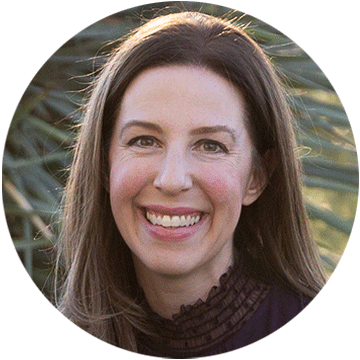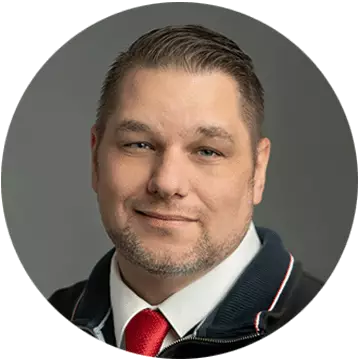What is the future of online college?
For the under-40 crowd, imagining a time without the internet may be as challenging as imagining a world without dogs.
Yet the digital world, with all its peaks and valleys, is still relatively new and, as a result, so is online education. Although it may seem like every institution out there has an online degree or services, that isn’t the case. What’s more, not all online offerings are the same or have a uniform design. As a result, not every online learning experience is created equal.
To understand what online school should and could be, and to get a peek at what the future holds, we sat down with Marc Booker, the vice provost of strategy at one of the forerunners of online college: University of Phoenix.
The dawn of online learning
UOPX was founded in 1976 on the premise that education should be accessible and flexible for working adults. Initially, that meant correspondence courses or night school, and UOPX built upon this framework by creating accelerated courses that met one night a week and leveraged group learning activities. Although this model assisted working adult students in pursuing their studies, and students processed content on their schedule, in-person faculty experiences were still integrated.
The advent of the internet took the concept of flexibility to the next level. By 1989, UOPX began delivering a handful of its degrees online, helping pioneer online college as we know it today.
Originally, the move had more to do with creating additional options for students and expanding access to working adult students rather than enhancing convenience. However, the online format helped students achieve their educational goals even faster and more realistically than courses with fixed schedules at brick-and-mortar institutions.
Sounds great, right? But the internet of 1989 was not the internet of the 21st century.
“When people today think of online education, they think of real-time data being exchanged,” Booker observes. “The reality is, back then (and today), online education falls under the category of ‘distance education.’”
Sure, it wasn’t the Pony Express back in ’89, but the early days of online college did involve mailing floppy disks back and forth and contending with slow, spotty dial-up modems. “Comparatively, it was not a very robust or elegant solution,” Booker concedes, although it met UOPX’s overarching objective of providing high-quality education to working adults who did not live close to a physical campus, or who could not commit a fixed block of time to commute to a classroom.
Expanding access to higher education
Full-time jobs, jobs with irregular hours, aging parents, young children — the list of adult responsibilities goes on and on, sometimes to the point where adding “college” just doesn’t make sense.
At least that used to be the case. Online college opened the door to new possibilities for these students. “They can actually go [to school] online and probably stay in class longer and do more classwork. They can decide which time of the day and hours of the week they’re going to study,” Booker says.
With the online option, students didn’t have to worry about missing a class because their jobs required them to be at work Monday through Friday, or when their kids came down with an ear infection, or when their parents needed help going to a doctor appointment.
Adult students could also save money on housing and transportation by going to school online. They could expedite their path to earning a degree by transferring eligible college credits (if they had them) or by receiving credit for eligible work or life experience.
Online degrees and courses, in other words, puts the power of scheduling back in students’ hands.
It also accommodates individuals who learn better outside of traditional classrooms. There are many learning styles, Booker notes. The online option answers a need for those who may not thrive in traditional classrooms. (Online college is also attractive to working adults who want to learn alongside their peers rather than go back to school with 18-year-olds.)
This ties back to another part of UOPX’s mission, Booker says, which is to be “open access.” That means everyone has a chance to earn a degree. (Provided they meet certain criteria for preparedness, of course.) You have to put in the work, but your past challenges or even failures don’t have to hold you back.
“Our philosophy has always been the same,” Booker says. “We offer learning experiences in an accessible manner to reach students where they are.”
UOPX’s impact on online college
A lot has changed since 1989, especially in the world of online college, which has burgeoned in both popularity and availability.
“It was like seven or eight institutions in the late ’80s,” Booker says. “Now it’s us and everyone else.”
That includes traditional universities. “It wasn’t just us that grew. It was a whole sector that grew,” he explains. “There were very traditional institutions [before the pandemic] that were doing an online course here and there or dipping their toe in the water and seeing success … and reaching populations they hadn’t reached before.”
While the pandemic likely accelerated the availability of online school, it wasn’t the only factor at work. Booker points to the financial value that online college offers: When students can save money because a degree program is offered online, then that option becomes both more feasible and attractive.
“I think there’s sometimes a misperception out there that, ‘Oh, COVID made online learning acceptable,’” Booker says. “It was already pretty much acceptable. It was just that people weren’t investing in the infrastructure as fast, but they would have gotten there sooner or later because the market, government and students were all saying this was a direction that people should evaluate.”
One important caveat to online education is the quality. UOPX helped pave the way for other digital options to emerge, but the results have not always been the same.
“People have been able to see what bad online learning and instruction was at points during the pandemic, because some institutions were forced into doing certain things [before they were ready],” Booker says. As always, do your homework before enrolling anywhere to understand what type of learning experience the institution will offer.
The growth and evolution of online programs
Booker likens UOPX’s role in the world of online college to being the canary in the coal mine. To be among the first necessarily means taking a risk, innovating, problem-solving and, eventually, proving that it can work.
“Right now, there are plenty of policies that talk about servicemember needs,” Booker says by way of an example. “But back in the ’80s, you were kind of resolving situations as they happened and working with external agencies to create policies that made sense for online learners. The scenarios that early online degree providers like us worked through helped build the backbone for many of the policies today.”
UOPX’s pioneering spirit is alive and well. Take, for example, the technology that continually evolves in the UOPX classroom. Staples in online learning like quizzes with auto-graded responses and discussion boards have made online college faster, more efficient and, true to UOPX’s mission, more accessible.
However, the addition of tools that allow students and faculty to record video messages, or to create dynamic learning experiences that take students through specific content depending on their responses, establishes a framework that can personalize learning for the student even more.
Challenges and criticisms
Despite its advantages, online college understandably gave some people pause in the beginning. Students had essentially learned one way for thousands of years, Booker points out. Online education changed that paradigm, and fear of the unknown often inspires skepticism.
Then there was the technology itself. For many people, new technology is scary, counterintuitive or confusing.
Misconceptions about the reach of online learning was another issue. While asynchronous online learning answered the needs of many working adult students, it wasn’t a panacea for all types of learners encompassing all higher education needs.
“Online school offers flexibility, but it also requires the student to leverage different skills in order to be successful,” Booker says.
So, what changed the tide of public opinion? “A lot of research came out in relation to how online learning can be successful for students,” Booker says, pointing out that the insights were gleaned after careful data review by third-party, unbiased entities.
UOPX in particular worked hard to ensure that its online programs were both rigorous and reputable. To that end, it sought and earned accreditation from the get-go. In fact, University of Phoenix has been continuously accredited by the Higher Learning Commission (HLC), hlcommission.org, since 1978, and encompasses the time period during which UOPX started offering its online programs.
Recognizing the twin values of innovation and rigor, the University has continued to research, evaluate and reimagine over the years, whether in the form of establishing an institution for working adults or creating technology platforms that improve accessibility and efficiency of the curriculum itself. One of its latest developments is skills-aligned programs: degree programs built around career-relevant skills for today’s workforce.
The future of online education
So, what’s in store for digital degree programs? Booker has a couple of thoughts.
1. Traditional schools aren’t going anywhere: “There should always be face-to-face learning for those who want it,” Booker says. Different educational models, whether it’s online, competency-based programs or traditional classroom experiences, answer different learning styles and needs.
2. Delivery methods will evolve: Augmented reality (AR) is on the horizon, according to Booker, who views it as a natural next step after books, radio, TV and the internet. He sees potential with both AR and virtual reality as delivery methods, though this is only conjecture based on the technology being widely available.
3. Assessments will also evolve: After successfully launching competency-based programs and direct assessment programs at UOPX, Booker has seen the value of offering diverse ways for students to demonstrate their skills and knowledge. Booker’s best guess is that artificial intelligence will play a role in new assessment methods, but not at the expense of faculty. Humans, he says, have to be able to connect the dots between knowledge sectors. That, for now, anyway, is still a distinctly human ability.
Whatever the future may hold, one thing is certain: With a past rooted in accessibility, flexibility and innovation, University of Phoenix will continue to ferret out ways to bring career-relevant education to the adult students who have a passion to learn and grow.
More than 100 program options — 90% of which are in growing fields. Learn more.

ABOUT THE AUTHOR
Elizabeth Exline has been telling stories ever since she won a writing contest in third grade. She's covered design and architecture, travel, lifestyle content and a host of other topics for national, regional, local and brand publications. Additionally, she's worked in content development for Marriott International and manuscript development for a variety of authors.

ABOUT THE REVIEWER
Dr. Marc Booker, University of Phoenix Vice Provost for Strategy, has more than two decades of experience working with online and distance education students at the post-secondary level. He currently oversees critical path academic initiatives to improve the student experience. Dr. Booker is a regular speaker, author and contributor to national higher education associations.
This article has been vetted by University of Phoenix's editorial advisory committee.
Read more about our editorial process.
Read more articles like this:




